Demonstration of GPT Vision and DeepFace
Exploring technologies to use for final project for A&HA-4084 at Teachers College
Demonstration of GPT Vision and DeepFace. GPT Vision released by Open AI early November 2023. DeepFace from Facebook, 2021.
I started with Roboflow’s GPT Vision application and modified it to include DeepFace.
GPT Vision: https://platform.openai.com/docs/guides/vision
DeepFace: https://github.com/serengil/deepface
Original Roboflow’s GPT Vision: https://github.com/roboflow/awesome-openai-vision-api-experiments
Awesome OpenAI Vision API Experiments: https://github.com/roboflow/awesome-openai-vision-api-experiments
Image Gallery
Image 1
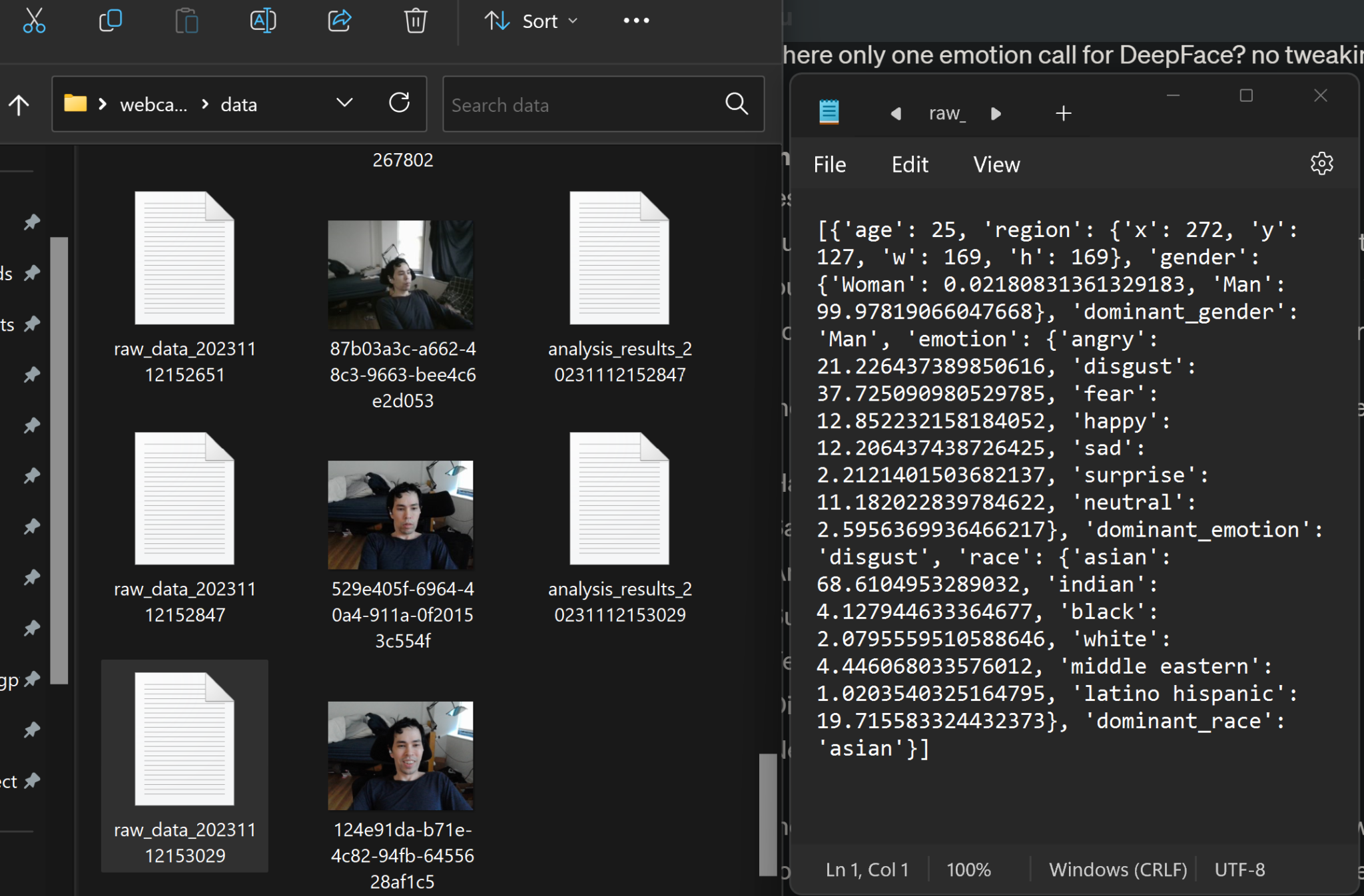
Image 2
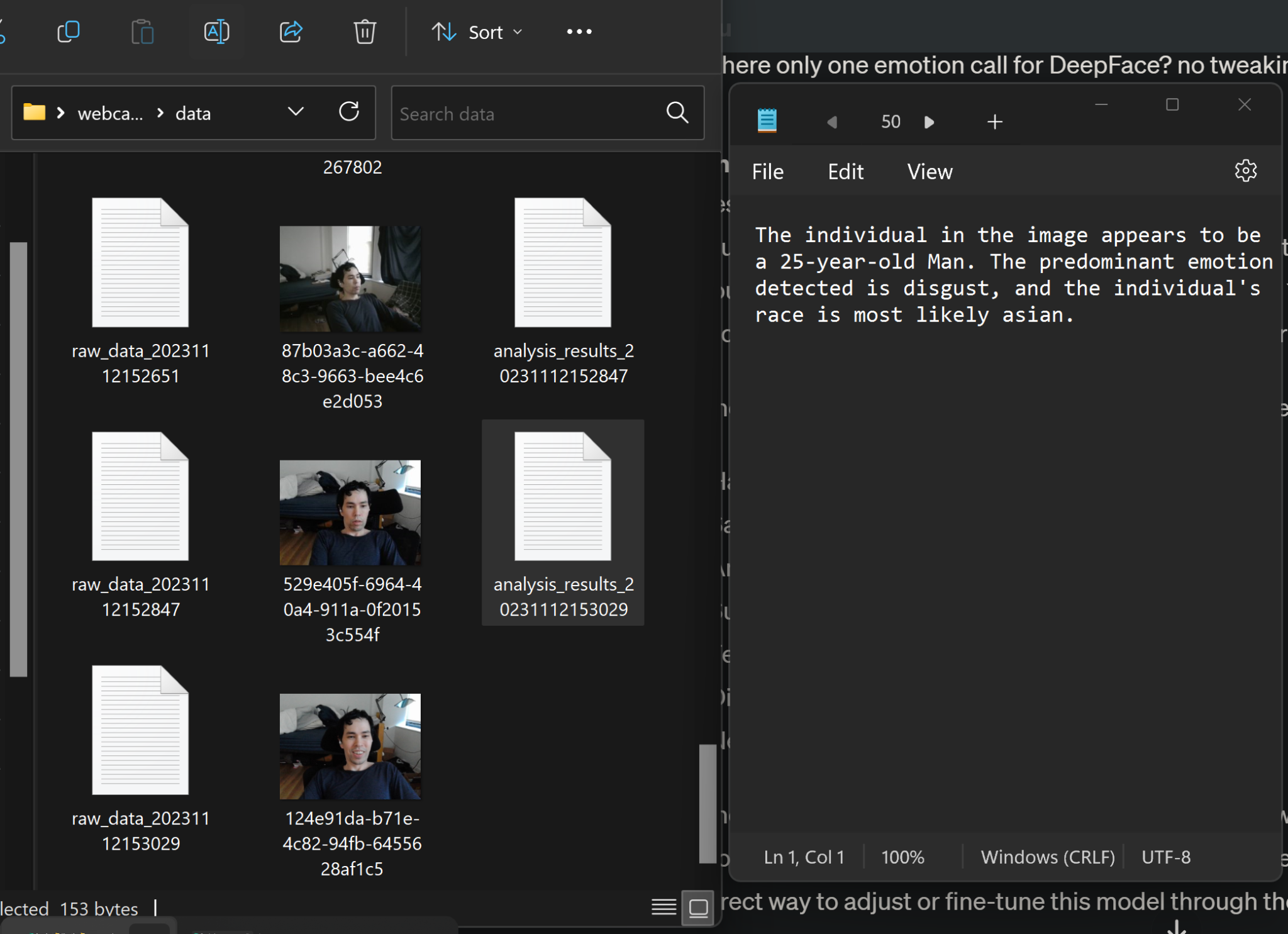
Image 3
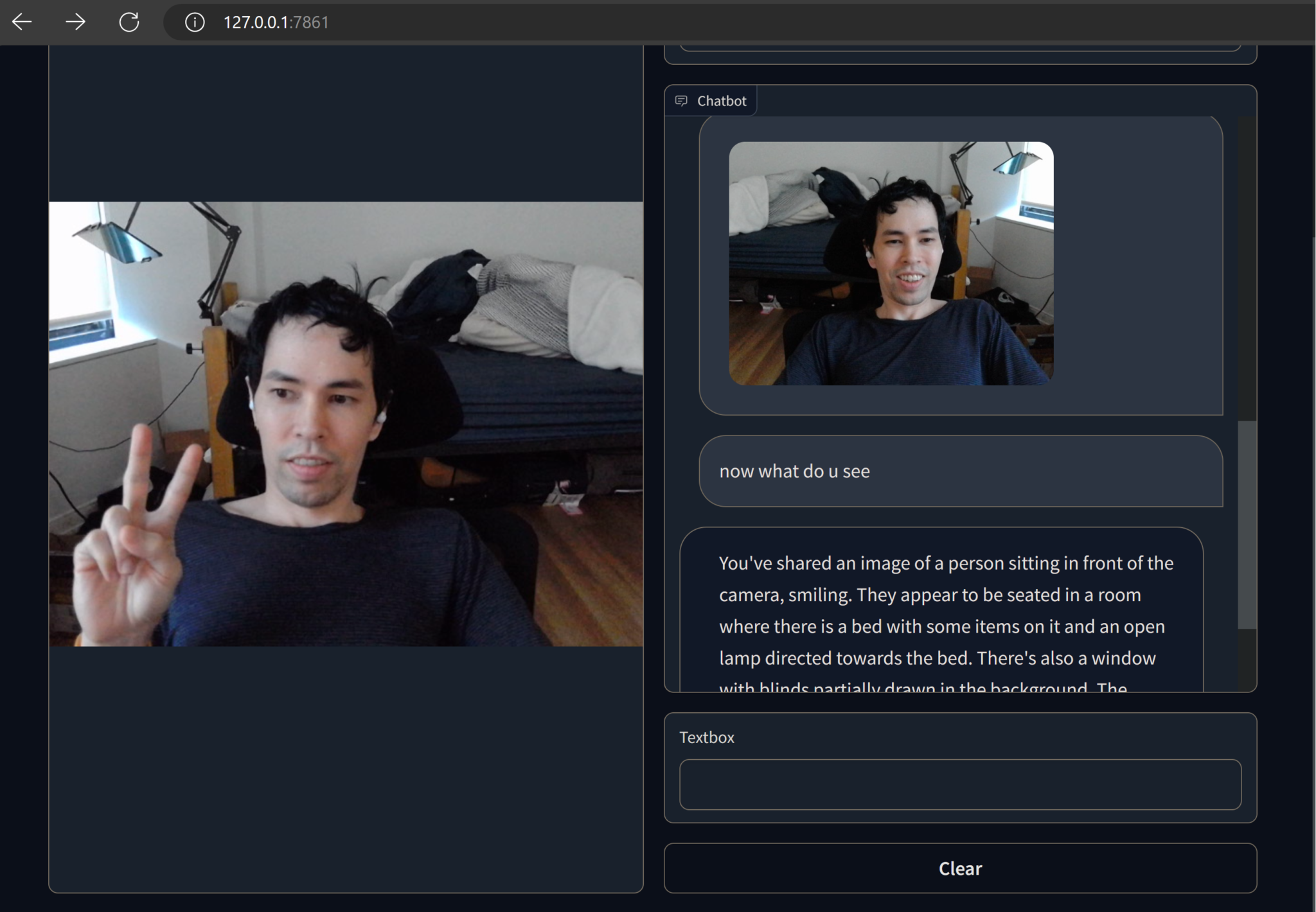
Image 4
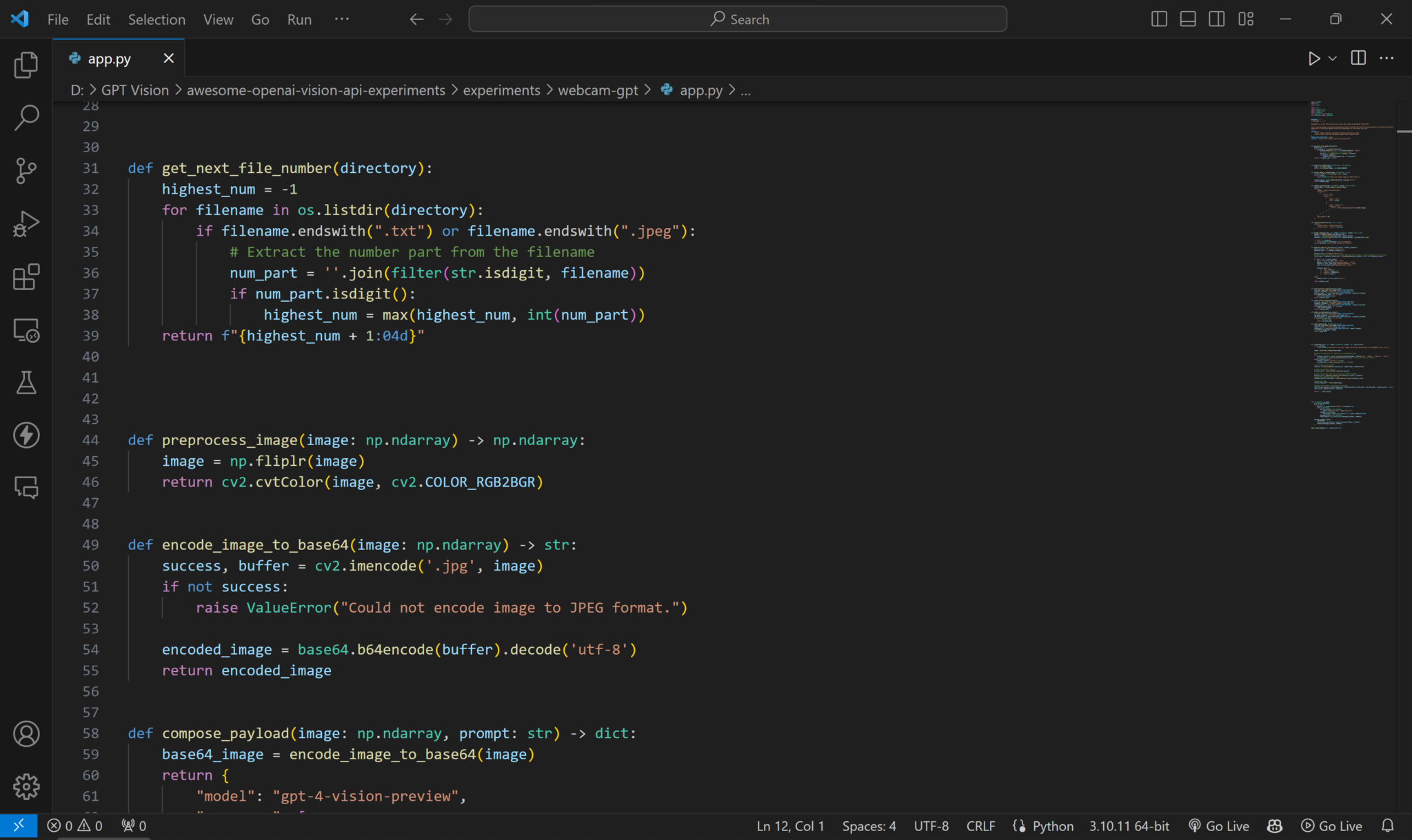
DeepFace marketing image
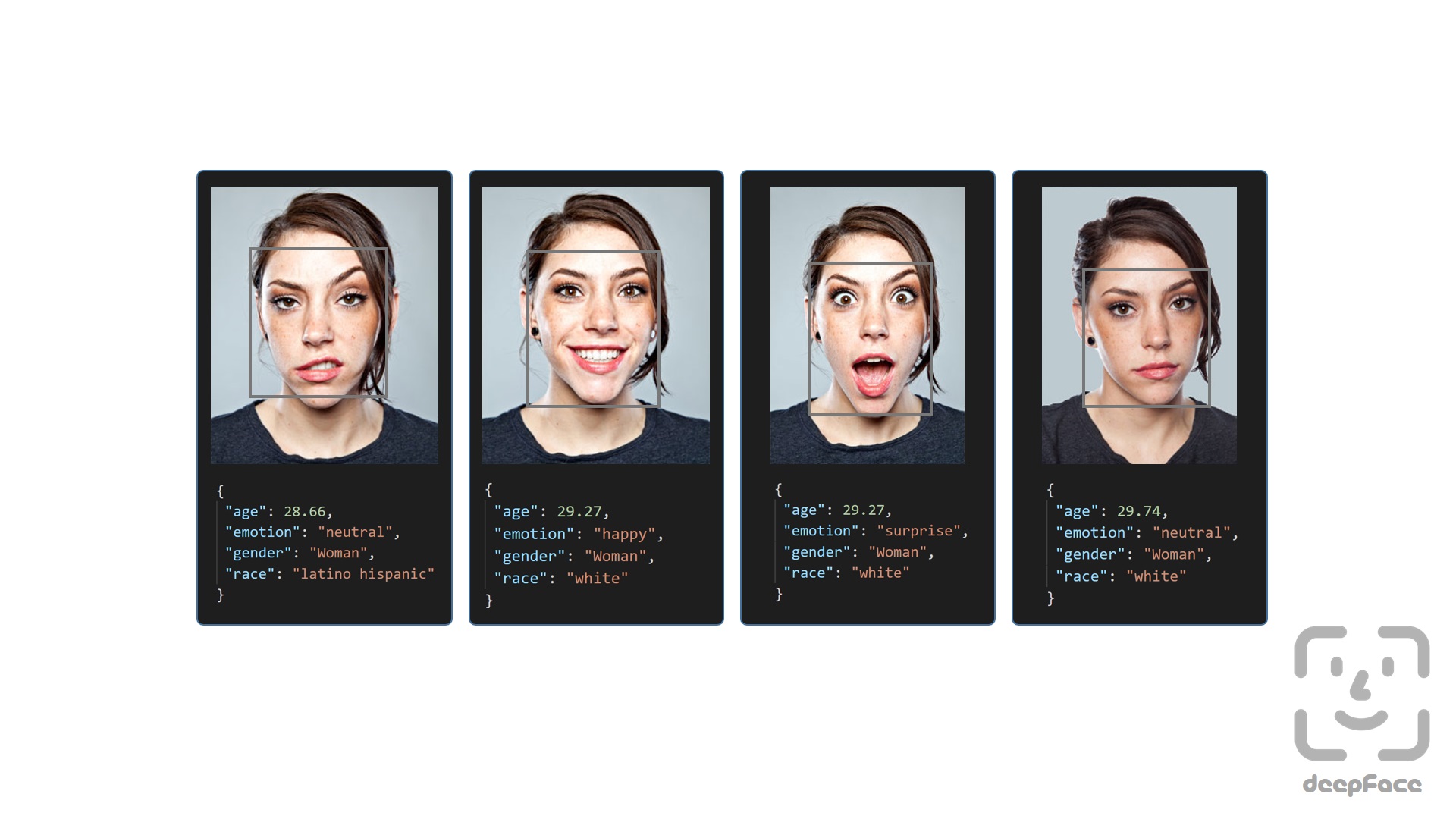
Adaptation of Roboflow Code
import base64
import os
import uuid
import cv2
import gradio as gr
import numpy as np
import requests
from deepface import DeepFace
from datetime import datetime
MARKDOWN = """
# WebcamGPT 💬 + 📸
webcamGPT is a tool that allows you to chat with video using OpenAI Vision API.
Visit [awesome-openai-vision-api-experiments](https://github.com/roboflow/awesome-openai-vision-api-experiments)
repository to find more OpenAI Vision API experiments or contribute your own.
"""
AVATARS = (
"https://media.roboflow.com/spaces/roboflow_raccoon_full.png",
"https://media.roboflow.com/spaces/openai-white-logomark.png"
)
IMAGE_CACHE_DIRECTORY = "data"
API_URL = "https://api.openai.com/v1/chat/completions"
def get_next_file_number(directory):
highest_num = -1
for filename in os.listdir(directory):
if filename.endswith(".txt") or filename.endswith(".jpeg"):
# Extract the number part from the filename
num_part = ''.join(filter(str.isdigit, filename))
if num_part.isdigit():
highest_num = max(highest_num, int(num_part))
return f"{highest_num + 1:04d}"
def preprocess_image(image: np.ndarray) -> np.ndarray:
image = np.fliplr(image)
return cv2.cvtColor(image, cv2.COLOR_RGB2BGR)
def encode_image_to_base64(image: np.ndarray) -> str:
success, buffer = cv2.imencode('.jpg', image)
if not success:
raise ValueError("Could not encode image to JPEG format.")
encoded_image = base64.b64encode(buffer).decode('utf-8')
return encoded_image
def compose_payload(image: np.ndarray, prompt: str) -> dict:
base64_image = encode_image_to_base64(image)
return {
"model": "gpt-4-vision-preview",
"messages": [
{
"role": "user",
"content": [
{
"type": "text",
"text": prompt
},
{
"type": "image_url",
"image_url": {
"url": f"data:image/jpeg;base64,{base64_image}"
}
}
]
}
],
"max_tokens": 300
}
def compose_headers(api_key: str) -> dict:
return {
"Content-Type": "application/json",
"Authorization": f"Bearer {api_key}"
}
def prompt_image(api_key: str, image: np.ndarray, prompt: str) -> str:
headers = compose_headers(api_key=api_key)
payload = compose_payload(image=image, prompt=prompt)
response = requests.post(url=API_URL, headers=headers, json=payload).json()
if 'error' in response:
raise ValueError(response['error']['message'])
return response['choices'][0]['message']['content']
def generate_analysis_text(analysis_results, chatbot_response):
analysis_text = "GPT Vision Analysis:\n"
analysis_text += f"{chatbot_response}\n\n"
analysis_text += "DeepFace Analysis:\n"
# Check if analysis_results is a list and take the first result, or use it directly if it's a dict
first_result = analysis_results[0] if isinstance(analysis_results, list) else analysis_results
if "Error" not in first_result:
age = first_result.get("age", "N/A")
gender = first_result.get("dominant_gender", "N/A")
emotion = first_result.get("dominant_emotion", "N/A")
race = first_result.get("dominant_race", "N/A")
analysis_text += (
f" - Age: {age}\n"
f" - Gender: {gender}\n"
f" - Emotion: {emotion}\n"
f" - Race: {race}\n"
)
else:
analysis_text += first_result["Error"]
return analysis_text
def cache_analysis_results(analysis_text):
file_num = get_next_file_number(IMAGE_CACHE_DIRECTORY)
analysis_filename = f"analysis_results_{file_num}.txt"
analysis_path = os.path.join(IMAGE_CACHE_DIRECTORY, analysis_filename)
with open(analysis_path, 'w') as file:
file.write(analysis_text)
return analysis_path
def cache_chatbot_response(response):
file_num = get_next_file_number(IMAGE_CACHE_DIRECTORY)
response_filename = f"chatbot_response_{file_num}.txt"
response_path = os.path.join(IMAGE_CACHE_DIRECTORY, response_filename)
with open(response_path, 'w') as file:
file.write(response)
return response_path
def cache_raw_data(analysis_results):
file_num = get_next_file_number(IMAGE_CACHE_DIRECTORY)
raw_data_filename = f"raw_data_{file_num}.txt"
raw_data_path = os.path.join(IMAGE_CACHE_DIRECTORY, raw_data_filename)
with open(raw_data_path, 'w') as file:
# ... existing code ...
return raw_data_path
def cache_image(image: np.ndarray) -> str:
file_num = get_next_file_number(IMAGE_CACHE_DIRECTORY)
image_filename = f"capture{file_num}.jpeg"
image_path = os.path.join(IMAGE_CACHE_DIRECTORY, image_filename)
cv2.imwrite(image_path, image)
return image_path
def respond(api_key: str, image: np.ndarray, prompt: str, chat_history):
if not api_key:
raise ValueError("API_KEY is not set. Please follow the instructions in the README to set it up.")
image = preprocess_image(image=image)
# DeepFace integration for emotional and demographic data
try:
analysis_results = DeepFace.analyze(img_path=image, actions=['age', 'gender', 'emotion', 'race'])
raw_data_path = cache_raw_data(analysis_results) # Cache the raw data results
except Exception as e:
analysis_results = {"Error": str(e)}
raw_data_path = cache_raw_data({"Error": str(e)})
# Get response from chatbot
response = prompt_image(api_key=api_key, image=image, prompt=prompt)
# Cache the chatbot response
response_path = cache_chatbot_response(response)
# Generate analysis text from results and chatbot response
analysis_text = generate_analysis_text(analysis_results, response)
# Cache the combined analysis text
combined_analysis_text_path = cache_analysis_results(analysis_text)
# Cache the image
cached_image_path = cache_image(image)
# Update chat history with paths and response
chat_history.append(((cached_image_path, combined_analysis_text_path, raw_data_path, response_path), None))
chat_history.append((prompt, response))
return "", chat_history
with gr.Blocks() as demo:
gr.Markdown(MARKDOWN)
with gr.Row():
webcam = gr.Image(source="webcam", streaming=True)
with gr.Column():
api_key_textbox = gr.Textbox(
label="OpenAI API KEY", type="password")
chatbot = gr.Chatbot(
height=500, bubble_full_width=False, avatar images=AVATARS)
message_textbox = gr.Textbox()
clear_button = gr.ClearButton([message_textbox, chatbot])
message_textbox.submit(
fn=respond,
inputs=[api_key_textbox, webcam, message_textbox, chatbot],
outputs=[message_textbox, chatbot]
)
demo.launch(debug=False, show_error=True)